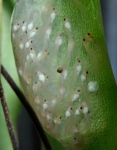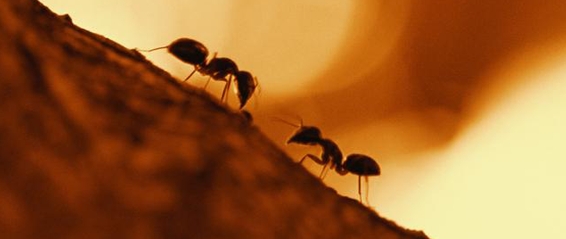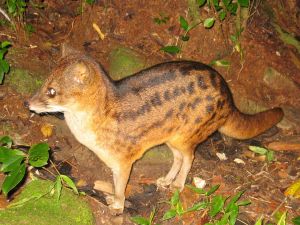Mitsinjo had a pleasant surprise early this year. Our partner FANC (Finnish Association for Nature Conservation) had received two donations – one from the Korkeasaari Zoo in Helsinki, Finland and the other from an American lady – to be used for the conservation of environment in Madagascar. FANC asked us to present good ideas for protecting the golden mantella (Mantella aurantiaca). We did not waste time, but began to elaborate a proposal for a small project to conserve and restore the natural habitat of this endangered amphibian species in Torotorofotsy. FANC’s coordinators were very pleased with our idea and as soon as Asity, the manager of the Torotorofotsy Ramsar site, had shown us green light, we started to make preparations for launching the project. It also meant good news to our members. Half of them are guides and many have been without regular income since March 2020, when the Covid-19 pandemic arrived closing the borders. We were now able to help them a little by offering them work during some months.
At the end of February, we were ready to go ahead with the activities. Before the teams were sent to the field, Youssouf, our conservation manager gave a short training and explained what was to be done. He also accompanied the teams in Torotorofotsy during the initial phases. The first step was to collect information for identifying the habitats of Mantella aurantiaca. Six teams went to villages around Torotorofotsy to interview local people. They mentioned 11 different sites where the golden mantella had been seen and was living before.
 An interview in Berano (photo by Youssouf)
An interview in Berano (photo by Youssouf)
At the beginning of March, another team continued by verifying the correctness of the received data. The team was divided in groups. The first group checked, if there were any signs of golden mantellas on the sites. In case croaks were heard or frogs were seen, the second group was sent to the site to make a more profound survey.

Observation of frog behaviour in Antsampanandratsy.
See a big vakona behind the team (photo by Youssouf)
The group went to Torotorofotsy early in the morning and spent a few hours observing the behaviour of the frogs. Attention was also paid to their general condition, how they were breathing and how vigorous and long their jumps were. Verification and observation done, it could be confirmed that two sites were current habitats. In Antandrokivanga, the team heard vocalizations made by mantellas, but no frogs were sighted. On the other hand, in Antsampanandratsy, seven indivuals – males, females and juveniles – were met.

The team also saw signs of illegal gold mining. Six pits left by diggers were found in Antsampanandratsy. In one pit, a golden mantella and a woolly lemur were lying dead. After the identification, the GPS coordinates of the two sites and the location of the pits were taken for the next phase of the project.
One of the deepest pits
In April, two teams returned to Torotorofotsy to start the restoration of the site in Antsampanandratsy. The first thing to do was to fill the pits to prevent them from posing further a risk to animals. Some excavations contained a lot of water and in one of them, the team noticed a tree frog of Boophis species that was alive. Fortunately, they managed to lift it out of the pit.

 The holes were filled with the sand that had been dug out by the miners
The holes were filled with the sand that had been dug out by the miners
At the beginning of May, the restoration was completed. The filled pits were covered with vegetation. Youssouf joined the team and showed plants that were good for enriching the variety. Aquatic plants such as various ferns as well as two seedlings of  Pandanus species (Vakona fandrana) were planted on every covered hole.
Pandanus species (Vakona fandrana) were planted on every covered hole.  The pandans had been brought from Mitsinjo’s tree nursery in Menalamba, but the other plants were collected in Antsampanandratsy near the pits. Many tree frogs consider vakonas good places for reproduction. There is an empty space between the leaves of the trees where water collects. Frogs like to lay their eggs in this pool, as it also offers shelter for the development of larvae and tadpoles. A few plants of Dracaena species (dragon trees) were also added on some pits. At each hole, the team wrote down in a notebook the names and the number of the planted species.
The pandans had been brought from Mitsinjo’s tree nursery in Menalamba, but the other plants were collected in Antsampanandratsy near the pits. Many tree frogs consider vakonas good places for reproduction. There is an empty space between the leaves of the trees where water collects. Frogs like to lay their eggs in this pool, as it also offers shelter for the development of larvae and tadpoles. A few plants of Dracaena species (dragon trees) were also added on some pits. At each hole, the team wrote down in a notebook the names and the number of the planted species.
 A newly planted vakona and a Malagasy climbing rain frog (Plethodontohyla mihanika),
A newly planted vakona and a Malagasy climbing rain frog (Plethodontohyla mihanika),
a terrestrial species that appeared on the spot while the team was working there.
 The planting team with Youssouf (on the right)
The planting team with Youssouf (on the right)
The last phase of the project was to delimit the two sites. The exact GPS coordinates were defined for drawing a map showing their locations. In Antsampanandratsy, the team met a female golden mantella. It had a beautiful colour and it was in good shape. In Antandrokivanga, calls of mantella were heard, but even this time, the frogs remained hidden from view.
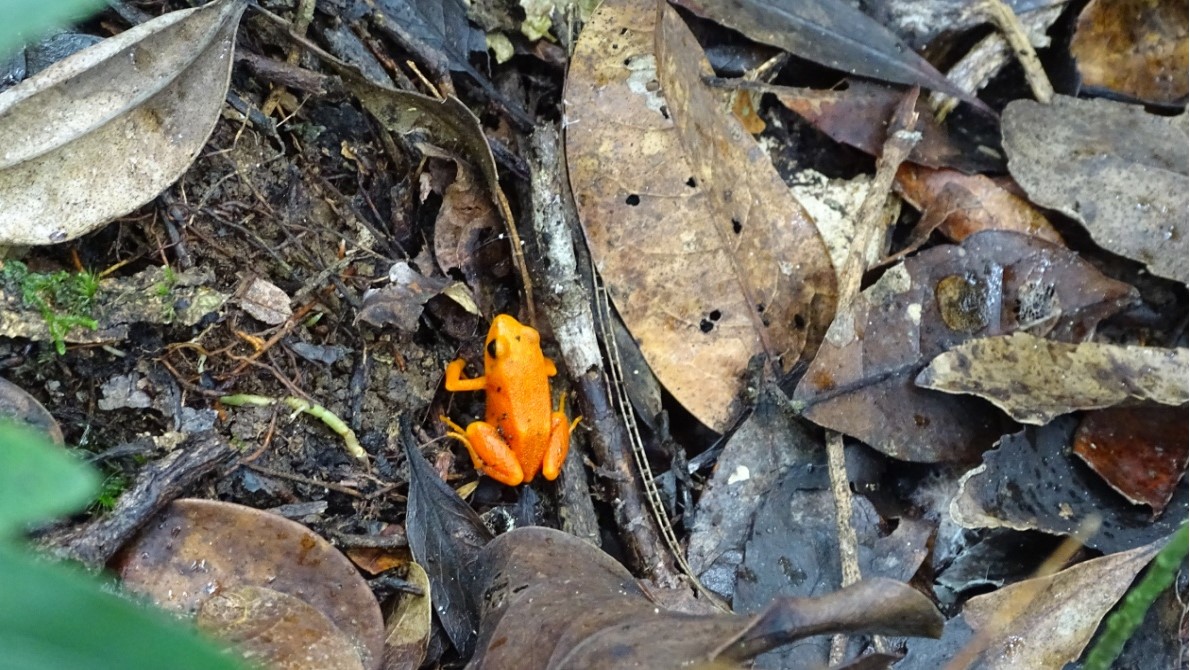 A female golden mantella in Antsampanandratsy (photo by Youssouf)
A female golden mantella in Antsampanandratsy (photo by Youssouf)
The project has ended, but we would like to continue and increase the number of protected habitats. We already have a new activity plan that we would carry out in close cooperation with Asity and local communities, if there were funds for this purpose. The project would also include regular monitoring and patrolling of the habitats to diminish the pressure and threats on them and on the golden mantella in order to secure its survival.
Photos: Youssouf, Ulla Aitakangas


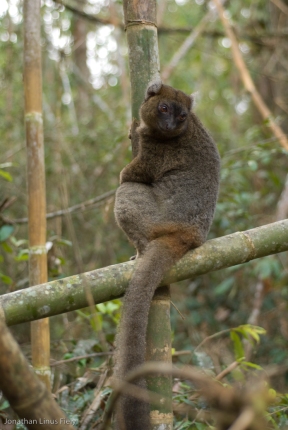





 Pandanus species (Vakona fandrana) were planted on every covered hole.
Pandanus species (Vakona fandrana) were planted on every covered hole.  The pandans had been brought from Mitsinjo’s tree nursery in Menalamba, but the other plants were collected in Antsampanandratsy near the pits.
The pandans had been brought from Mitsinjo’s tree nursery in Menalamba, but the other plants were collected in Antsampanandratsy near the pits. 







